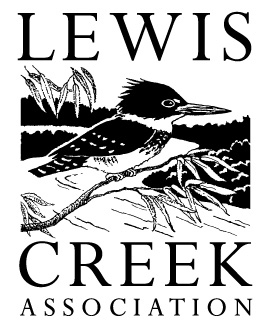Lewis Creek Association is excited to begin a new project that will use citizen science to map Japanese knotweed (an invasive, noxious weed that often invades stream edges) found in the Lewis Creek watershed, and use a demonstration site in North Ferrisburgh to show how to remove knotweed using non-chemical methods. This is the first year of a long-term project, and you can help! Now is the easiest time to see and identify Japanese knotweed, as it is just past flowering (white flowers in clusters), and the tall stalks that resemble bamboo with spade- or heart-shaped leaves are apparent. The plant spreads through its root system (not by flowers/seeds), so can easily wash downstream and invade stream edges, creating a monoculture that causes additional streambank erosion and creates poor habitat for native wildlife.
Japanese knotweed, flowering
Japanese knotweed, new growth (often with a reddish tint to the stem)
What can you do to help? Set up an account on iNaturalist’s website, or using the app on your phone. Search for the project “Knotweed in Lewis Creek Watershed” and join it. Make sure your phone or device’s location is on for photos (or be prepared to map your location manually), then snap a photo of knotweed in the Lewis Creek watershed (especially focused on areas where knotweed may spread to or is near the creek). Upload the photo to iNaturalist, make sure the location is accurate and included, then under Projects, choose/turn on the button for the Knotweed in Lewis Creek Watershed. You can choose to add additional information (length, width, and density of infestation) but this is optional. Then share the observation and photo with us. Questions about how this all works? Check out the video tutorials on iNaturalist at https://www.inaturalist.org/pages/video+tutorials Questions regarding the project can be directed to LCA Program Manager Kate Kelly at lewiscreekorg@gmail.com



